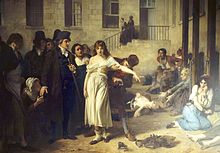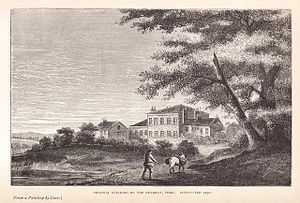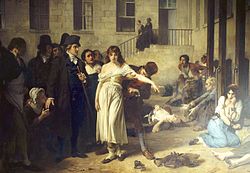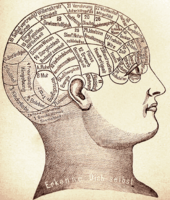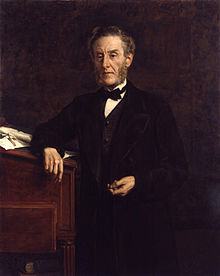Freeing the mad from chains
"The Extraction of the Stone of Madness". Art between 1488 and 1516
As long as psychiatry has existed it has been subject to controversy. Psychiatric treatments are sometimes seen to be ultimately more damaging than helpful to patients. Psychiatry is often thought to be a benign medical practice, but at times is seen by some as a coercive instrument of oppression. Psychiatry is seen to involve an unequal power relationship between doctor and patient, and critics of psychiatry claim a subjective diagnostic process, leaving much room for opinions and interpretations. In 2013, psychiatrist Allen Frances said that "psychiatric diagnosis still relies exclusively on fallible subjective judgments rather than objective biological tests". Every society permits compulsory treatment of mental patients.
Psychiatry's history involves what some view as dangerous treatments. Electroconvulsive therapy is one of these, which was used widely between the 1930s and 1960s and is still in use today. The brain surgery procedure lobotomy is another practice that was ultimately seen as too invasive and brutal. The term anti-psychiatry was coined by psychiatrist David Cooper in 1967 and is understood in current psychiatry to mean opposition to psychiatry's perceived role in many aspects of treatment.
Background
Too often it is felt institutions have too much power, concerns of patients or their relatives are ignored. Psychiatric nurses impose decisions, are reluctant to share information and feel they know best. Only a minority of staff involve patients in decision making. Client empowerment can improve power imbalance. Psychiatrically ill patients are at risk of abuse and discrimination in the mental health system and also the primary care sector. Studies are needed to determine whether power imbalance leads to abuse. Some degree of power imbalance appears inevitable since some patients lack decision making capacity but even then patients benefit from being impowered within their limits. For example, a patient felt lethargic in mornings due to medication she was required to take. She was allowed to stay in bed and miss breakfast as she wanted.Multidisciplinary teams benefit patients to the extent that professionals with a range of different expertise are caring for them. There is also a problem because patients who complain about the way they are treated face a group rather than one individual opposing them.
Vienna's Narrenturm — German for "fools' tower" — was one of the earliest buildings specifically designed as a "madhouse". It was built in 1784.
Since the 1960s there have been many challenges to the concept of mental illness itself. Thomas Szasz wrote The Myth of Mental Illness (1960) which said that mental illnesses are not real in the sense that cancers are real. Except for a few identifiable brain diseases, such as Alzheimer’s disease, there are "neither biological or chemical tests nor biopsy or necropsy findings" for verifying or falsifying psychiatric diagnoses. There are no objective methods for detecting the presence or absence of mental disease. Szasz argued that mental illness was a myth used to disguise moral conflicts. He has said "serious persons ought not to take psychiatry seriously -- except as a threat to reason, responsibility and liberty".
Sociologists such as Erving Goffman and Thomas Scheff said that mental illness was merely another example of how society labels and controls non-conformists; behavioural psychologists challenged psychiatry's fundamental reliance on unobservable phenomena; and gay rights activists criticised the APA's listing of homosexuality as a mental disorder. A widely publicised study by Rosenhan in Science was viewed as an attack on the efficacy of psychiatric diagnosis.
These critiques targeted the heart of psychiatry:
They suggested that psychiatry's core concepts were myths, that psychiatry's relationship to medical science had only historical connections, that psychiatry was more aptly characterised as a vast system of coercive social management, and that its paradigmatic practice methods (the talking cure and psychiatric confinement) were ineffective or worse.
Medicalization
Conversation between doctor and patient.
For many years, some psychiatrists (such as David Rosenhan, Peter Breggin, Paula Caplan, Thomas Szasz) and outside critics (such as Stuart A. Kirk) have "been accusing psychiatry of engaging in the systematic medicalization of normality". More recently these concerns have come from insiders who have worked for and promoted the APA (e.g., Robert Spitzer, Allen Frances). In 2013, Allen Frances said that "psychiatric diagnosis still relies exclusively on fallible subjective judgments rather than objective biological tests".
Medicalization (or medicalisation) is the process by which human conditions and problems come to be defined and treated as medical conditions, and thus become the subject of medical study, diagnosis, prevention, or treatment. Medicalization can be driven by new evidence or hypotheses about conditions; by changing social attitudes or economic considerations; or by the development of new medications or treatments.
The concept of medicalization was devised by sociologists to explain how medical knowledge is applied to behaviors which are not self-evidently medical or biological. The term medicalization entered the sociology literature in the 1970s in the works of Irving Zola, Peter Conrad and Thomas Szasz, among others. These sociologists viewed medicalization as a form of social control in which medical authority expanded into domains of everyday existence, and they rejected medicalization in the name of liberation. This critique was embodied in works such as Conrad's "The discovery of hyperkinesis: notes on medicalization of deviance", published in 1973 (hyperkinesis was the term then used to describe what we might now call ADHD). Nevertheless, opium was used to pacify children in ancient Egypt before 2000 BC.
These sociologists did not believe medicalization to be a new phenomenon, arguing that medical authorities had always been concerned with social behavior and traditionally functioned as agents of social control (Foucault, 1965; Szasz,1970; Rosen). However, these authors took the view that increasingly sophisticated technology had extended the potential reach of medicalization as a form of social control, especially in terms of "psychotechnology" (Chorover,1973).
In the 1975 book Limits to medicine: Medical nemesis (1975), Ivan Illich put forth one of the earliest uses of the term "medicalization". Illich, a philosopher, argued that the medical profession harms people through iatrogenesis, a process in which illness and social problems increase due to medical intervention. Illich saw iatrogenesis occurring on three levels: the clinical, involving serious side effects worse than the original condition; the social, whereby the general public is made docile and reliant on the medical profession to cope with life in their society; and the structural, whereby the idea of aging and dying as medical illnesses effectively "medicalized" human life and left individuals and societies less able to deal with these natural processes.
Marxists such as Vicente Navarro (1980) linked medicalization to an oppressive capitalist society. They argued that medicine disguised the underlying causes of disease, such as social inequality and poverty, and instead presented health as an individual issue. Others examined the power and prestige of the medical profession, including use of terminology to mystify and of professional rules to exclude or subordinate others.
Some argue that in practice the process of medicalization tends to strip subjects of their social context, so they come to be understood in terms of the prevailing biomedical ideology, resulting in a disregard for overarching social causes such as unequal distribution of power and resources. A series of publications by Mens Sana Monographs have focused on medicine as a corporate capitalist enterprise.
Political abuse
Psychiatrists have been involved in human rights abuses in states across the world when the definitions of mental disease were expanded to include political disobedience. As scholars have long argued, governmental and medical institutions code menaces to authority as mental diseases during political disturbances. Nowadays, in many countries, political prisoners are sometimes confined and abused in mental institutions. Psychiatric confinement of sane people is a particularly pernicious form of repression.Psychiatry possesses a built-in capacity for abuse that is greater than in other areas of medicine. The diagnosis of mental disease allows the state to hold persons against their will and insist upon therapy in their interest and in the broader interests of society. In addition, receiving a psychiatric diagnosis can in itself be regarded as oppressive. In a monolithic state, psychiatry can be used to bypass standard legal procedures for establishing guilt or innocence and allow political incarceration without the ordinary odium attaching to such political trials. The use of hospitals instead of jails prevents the victims from receiving legal aid before the courts, makes indefinite incarceration possible, discredits the individuals and their ideas. In that manner, whenever open trials are undesirable, they are avoided.
Examples of political abuse of the power, entrusted in physicians and particularly psychiatrists, are abundant in history and seen during the Nazi era and the Soviet rule when political dissenters were labeled as “mentally ill” and subjected to inhumane “treatments.” In the period from the 1960s up to 1986, abuse of psychiatry for political purposes was reported to be systematic in the Soviet Union, and occasional in other Eastern European countries such as Romania, Hungary, Czechoslovakia, and Yugoslavia. The practice of incarceration of political dissidents in mental hospitals in Eastern Europe and the former USSR damaged the credibility of psychiatric practice in these states and entailed strong condemnation from the international community. Political abuse of psychiatry also takes place in the People's Republic of China and in Russia. Psychiatric diagnoses such as the diagnosis of ‘sluggish schizophrenia’ in political dissidents in the USSR were used for political purposes.
Electroconvulsive therapy
Electroconvulsive therapy (ECT) was one treatment that the anti-psychiatry movement wanted eliminated. Their arguments were that ECT damages the brain, and was used as punishment or as a threat to keep the patients "in line". Since then, ECT has improved considerably, and is performed under general anaesthetic in a medically supervised environment.The National Institute for Health and Care Excellence recommends ECT for the short term treatment of severe, treatment-resistant depression, and advises against its use in schizophrenia. According to the Canadian Network for Mood and Anxiety Treatments, ECT is more efficacious for the treatment of depression than antidepressants, with a response rate of 90% in first line treatment and 50-60% in treatment-resistant patients. On the other hand, a 2010 literature review concluded that ECT had minimal benefits for people with depression and schizophrenia.
The most common side effects include headache, muscle soreness, confusion, and temporary loss of recent memory. There is strong evidences that ECT causes structural brain damages, observable on MRI. Before these advanced brain imaging techniques, some researchers said that ECT doesn't cause physical damage. The observation on MRI of objective lesions in the brain is consistent with research on cognitive impairments.
Marketing of antipsychotic drugs
Psychiatry has greatly benefitted by advances in pharmacotherapy. However, the close relationship between those prescribing psychiatric medication and pharmaceutical companies, and the risk of a conflict of interest, is also a source of concern. This marketing by the pharmaceutical industry has an influence on practicing psychiatrists, which affects prescription. Child psychiatry is one of the areas in which prescription has grown massively. In the past, it was rare, but nowadays child psychiatrists on a regular basis prescribe psychotropic drugs for children, for instance Ritalin.Joanna Moncrieff has argued that antipsychotic drug treatment is often undertaken as a means of control rather than to treat specific symptoms experienced by the patient. Moncreiff has further argued that the evidence for antipsychotics from discontinuation-relapse studies may be flawed, because they do not take into account that antipsychotics may sensitize the brain and provoke psychosis if discontinued, which may then be wrongly interpreted as a relapse of the original condition.
Use of this class of drugs has a history of criticism in residential care. As the drugs used can make patients calmer and more compliant, critics claim that the drugs can be overused. Outside doctors can feel under pressure from care home staff. In an official review commissioned by UK government ministers it was reported that the needless use of antipsychotic medication in dementia care was widespread and was linked to 1800 deaths per year. In the US, the government has initiated legal action against the pharmaceutical company Johnson & Johnson for allegedly paying kickbacks to Omnicare to promote its antipsychotic risperidone (Risperdal) in nursing homes.
There has also been controversy about the role of pharmaceutical companies in marketing and promoting antipsychotics, including allegations of downplaying or covering up adverse effects, expanding the number of conditions or illegally promoting off-label usage; influencing drug trials (or their publication) to try to show that the expensive and profitable newer atypicals were superior to the older cheaper typicals that were out of patent. Following charges of illegal marketing, settlements by two large pharmaceutical companies in the US set records for the largest criminal fines ever imposed on corporations. One case involved Eli Lilly and Company's antipsychotic Zyprexa, and the other involved Bextra. In the Bextra case, the government also charged Pfizer with illegally marketing another antipsychotic, Geodon. In addition, Astrazeneca faces numerous personal-injury lawsuits from former users of Seroquel (quetiapine), amidst federal investigations of its marketing practices.[51] By expanding the conditions for which they were indicated, Astrazeneca's Seroquel and Eli Lilly's Zyprexa had become the biggest selling antipsychotics in 2008 with global sales of $5.5 billion and $5.4 billion respectively.
Harvard medical professor Joseph Biederman conducted research on bipolar disorder in children that led to an increase in such diagnoses. A 2008 Senate investigation found that Biederman also received $1.6 million in speaking and consulting fees between 2000 and 2007 — some of them undisclosed to Harvard — from companies including makers of antipsychotic drugs prescribed for children with bipolar disorder. Johnson & Johnson gave more than $700,000 to a research center that was headed by Biederman from 2002 to 2005, where research was conducted, in part, on Risperdal, the company's antipsychotic drug. Biederman has responded saying that the money did not influence him and that he did not promote a specific diagnosis or treatment.
In 2004, University of Minnesota research participant Dan Markingson committed suicide while enrolled in an industry-sponsored pharmaceutical trial comparing three FDA-approved atypical antipsychotics: Seroquel (quetiapine), Zyprexa (olanzapine), and Risperdal (risperidone). Writing on the circumstances surrounding Markingson's death in the study, which was designed and funded by Seroquel manufacturer AstraZeneca, University of Minnesota Professor of Bioethics Carl Elliott noted that Markingson was enrolled in the study against the wishes of his mother, Mary Weiss, and that he was forced to choose between enrolling in the study or being involuntarily committed to a state mental institution. Further investigation revealed financial ties to AstraZeneca by Markingson's psychiatrist, Dr. Stephen C. Olson, oversights and biases in AstraZeneca's trial design, and the inadequacy of university Institutional Review Board (IRB) protections for research subjects. A 2005 FDA investigation cleared the university. Nonetheless, controversy around the case has continued. Mother Jones resulted in a group of university faculty members sending a public letter to the university Board of Regents urging an external investigation into Markingson's death.
Pharmaceutical companies have also been accused of attempting to set the mental health agenda through activities such as funding consumer advocacy groups.
In an effort to reduce the potential for hidden conflicts of interest between researchers and pharmaceutical companies, the US Government issued a mandate in 2012 requiring that drug manufacturers receiving funds under the Medicare and Medicaid programs collect data, and make public, all gifts to doctors and hospitals.
Prisoner experimentation
Prisoners in psychiatric hospitals have been the subjects of experiments involving new medications. Vladimir Khailo of the USSR was an individual exposed to such treatment in the 1980s. However, the involuntary treatment of prisoners by use of psychiatric drugs has not been limited to Khailo, nor the USSR.ADHD
ADHD, its diagnosis, and its treatment have been controversial since the 1970s. The controversies involve clinicians, teachers, policymakers, parents, and the media. Positions range from the view that ADHD is within the normal range of behavior to the hypothesis that ADHD is a genetic condition. Other areas of controversy include the use of stimulant medications in children, the method of diagnosis, and the possibility of overdiagnosis. In 2012, the National Institute for Health and Care Excellence, while acknowledging the controversy, states that the current treatments and methods of diagnosis are based on the dominant view of the academic literature. In 2014, Keith Conners, one of the early advocates for recognition of the disorder, spoke out against overdiagnosis in a New York Times article. In contrast, a 2014 peer-reviewed medical literature review indicated that ADHD is underdiagnosed in adults.With widely differing rates of diagnosis across countries, states within countries, races, and ethnicities, some suspect factors other than the presence of the symptoms of ADHD are playing a role in diagnosis. Some sociologists consider ADHD to be an example of the medicalization of deviant behavior, that is, the turning of the previously non-medical issue of school performance into a medical one. Most healthcare providers accept ADHD as a genuine disorder, at least in the small number of people with severe symptoms. Among healthcare providers the debate mainly centers on diagnosis and treatment in the much larger number of people with less severe symptoms.
As of 2009, 8% of all United States Major League Baseball players had been diagnosed with ADHD, making the disorder common among this population. The increase coincided with the League's 2006 ban on stimulants, which has raised concern that some players are mimicking or falsifying the symptoms or history of ADHD to get around the ban on the use of stimulants in sport.
Schizophrenia diagnosis
Underlying issues associated with schizophrenia would be better addressed as a spectrum of conditions or as individual dimensions along which everyone varies rather than by a diagnostic category based on an arbitrary cut-off between normal and ill. This approach appears consistent with research on schizotypy, and with a relatively high prevalence of psychotic experiences, mostly non-distressing delusional beliefs, among the general public. In concordance with this observation, psychologist Edgar Jones, and psychiatrists Tony David and Nassir Ghaemi, surveying the existing literature on delusions, pointed out that the consistency and completeness of the definition of delusion have been found wanting by many; delusions are neither necessarily fixed nor false, and need not involve the presence of incontrovertible evidence.Nancy Andreasen has criticized the current DSM-IV and ICD-10 criteria for sacrificing diagnostic validity for the sake of artificially improving reliability. She argues that overemphasis on psychosis in the diagnostic criteria, while improving diagnostic reliability, ignores more fundamental cognitive impairments that are harder to assess due to large variations in presentation. This view is supported by other psychiatrists. In the same vein, Ming Tsuang and colleagues argue that psychotic symptoms may be a common end-state in a variety of disorders, including schizophrenia, rather than a reflection of the specific etiology of schizophrenia, and warn that there is little basis for regarding DSM’s operational definition as the "true" construct of schizophrenia. Neuropsychologist Michael Foster Green went further in suggesting the presence of specific neurocognitive deficits may be used to construct phenotypes that are alternatives to those that are purely symptom-based. These deficits take the form of a reduction or impairment in basic psychological functions such as memory, attention, executive function and problem solving.
The exclusion of affective components from the criteria for schizophrenia, despite their ubiquity in clinical settings, has also caused contention. This exclusion in the DSM has resulted in a "rather convoluted" separate disorder—schizoaffective disorder. Citing poor interrater reliability, some psychiatrists have totally contested the concept of schizoaffective disorder as a separate entity. The categorical distinction between mood disorders and schizophrenia, known as the Kraepelinian dichotomy, has also been challenged by data from genetic epidemiology.
Deep sleep therapy
Controversial Australian psychiatrist Harry Bailey treated mental patients via deep sleep therapy and other methods at Chelmsford Private Hospital, a Sydney mental hospital. He has been linked with the deaths of 85 patients, including 19 who committed suicide.The resultant scandal broke in the early 1980s, following two 60 Minutes programs in 1980 and 1982, and closed down Chelmsford entirely. In 1985, the "legal and medical investigative machinery finally co-ordinated their actions and Bailey was facing committal proceedings over the death of Miriam Podio in 1977". The Chelmsford Royal Commission under the Greiner government from 1988 to 1990, headed by Justice John Slattery of the New South Wales Supreme Court, produced findings concerning Chelmsford's treatment program that ran to twelve volumes and described deplorable conditions, fraud, and misconduct and medical negligence. Bailey committed suicide by ingesting barbiturates at Mount White.
Anti-psychiatry
Controversy has often surrounded psychiatry, and the anti-psychiatry message is that psychiatric treatments are ultimately more damaging than helpful to patients. Psychiatry is often thought to be a benign medical practice, but at times is seen by some as a coercive instrument of oppression. Psychiatry is seen to involve an unequal power relationship between doctor and patient, and advocates of anti-psychiatry claim a subjective diagnostic process, leaving much room for opinions and interpretations. Every society, including liberal Western society, permits compulsory treatment of mental patients. The World Health Organization (WHO) recognizes that "poor quality services and human rights violations in mental health and social care facilities are still an everyday occurrence in many places", but has recently taken steps to improve the situation globally.Psychiatry's history involves what some view as dangerous treatments. Electroconvulsive therapy is one of these, which was used widely between the 1930s and 1960s and is still in use today. The brain surgery procedure lobotomy is another practice that was ultimately seen as too invasive and brutal. In the US, between 1939 and 1951, over 50,000 lobotomy operations were performed in mental hospitals. Valium and other sedatives have arguably been over-prescribed, leading to a claimed epidemic of dependence. Concerns also exist for the significant increase in prescription of psychiatric drugs to children.
Three authors have come to personify the movement against psychiatry, of which two are or have been practicing psychiatrists. The most influential was R.D. Laing, who wrote a series of best-selling books, including; The Divided Self. Thomas Szasz rose to fame with the book The Myth of Mental Illness. Michael Foucault challenged the very basis of psychiatric practice and cast it as repressive and controlling. The term "anti-psychiatry" itself was coined by David Cooper in 1967.
Divergence within psychiatry generated the anti-psychiatry movement in the 1960s and 1970s, and is still present. Issues remaining relevant in contemporary psychiatry are questions of; freedom versus coercion, mind versus brain, nature versus nurture, and the right to be different.
